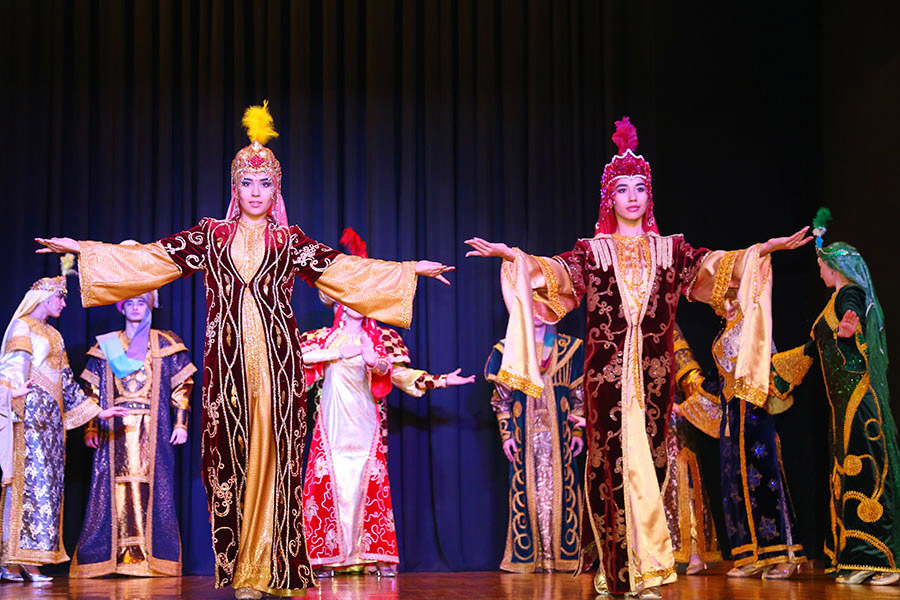Theatre of Historical Costume "El Merosi", Samarkand

Address: 27, Alisher Navoi Street, Samarkand
Phone: +998906069817 (WhatsApp, Telegram)
Website: https://www.elmerosi.uz/index.php/ru/
Facebook: https://www.facebook.com/elmerosi.samarkand/
Opening hours: from 10:00 to 18:00
Ticket price: 200,000 soums (as of September 2024)
The Historical Costume Theater "El Merosi" is a unique venue where visitors can dive into the history and traditions of Uzbekistan through a vibrant dance performance. The theater has created an authentic program, "A Moment of Eternity", which offers a rich retrospective of Uzbekistan's cultural heritage. Audiences will embark on a captivating journey into the distant past, encountering the ancient civilizations that have shaped Samarkand and left a lasting mark on its culture and people.
The theater showcases costumes from various historical periods, from the Bronze Age to modern times, and includes presentations of wedding customs and traditions that are still alive in Uzbek families today. Visitors will see the costumes of the ancient Scythians from the 8th century B.C., marvel at the elegance of costumes from the Sogdian period, admire the costumes of the Timurid nobility, and explore other exquisite garments representing the peoples of the East.
Most of these costumes have been reconstructed thanks to archaeological research at ancient sites. Depictions of people on silver vessels, stone bas-reliefs, colorful frescoes on palace walls, and illustrations from ancient manuscripts helped designers, stylists, and tailors create vibrant examples of Uzbek national costume. The costumes are made of silk, brocade, satin, and leather, decorated with paintings, lace, ribbons, and gold-thread embroidery. This colorful display comes alive in mesmerizing dances, shimmering in vibrant hues and captivating audiences with the grace of each dancer's movement.
In addition to the main program, the theater also hosts movie screenings, including children's and family films, as well as animated films.
Reservations can be made by phone, messaging apps, or through the theater's social media platforms.

